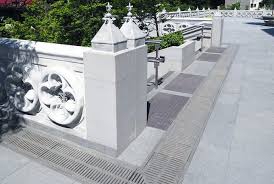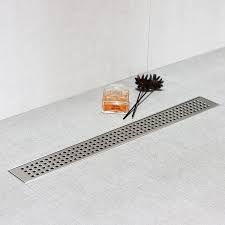Discover essential factors for choosing the right drainage grates types. Ensure efficiency and durability with expert insights on Drainage Grates Types. Drainage grates might not be the most glamorous aspect of urban infrastructure, but they play a crucial role in managing stormwater and preventing flooding. Whether you’re designing a new drainage system or replacing old grates, selecting the right type is essential for efficient water flow and long-term durability. In this guide, we’ll explore the factors you need to consider when choosing drainage grates to ensure you make the best decision for your project.
Contents
Drainage Grates Types: Factors to Keep in Mind
Location and Application
The first step in selecting drainage grates is to assess the location and the application requirements. Consider factors such as traffic volume, load capacity, and environmental conditions. Grates installed in pedestrian areas will have different specifications than those in roadways or industrial zones. Matching the grate to the intended application is critical for ensuring optimal performance and longevity.

Material
Drainage grates are commonly made from materials like cast iron, steel, aluminum, and composite materials. Each material has its own set of advantages and disadvantages. Cast iron grates are durable and provide excellent load-bearing capacity, making them suitable for heavy traffic areas. Steel grates offer strength and corrosion resistance, ideal for industrial applications. Aluminum grates are lightweight and resistant to rust, making them a popular choice for pedestrian areas. Composite grates are lightweight, corrosion-resistant, and often made from recycled materials, offering environmental benefits.
Load Rating
Drainage grates are subjected to various loads, including pedestrian traffic, vehicles, and heavy machinery. It’s crucial to select grates with an appropriate load rating to withstand the expected loads without deformation or failure. The load rating is typically expressed in terms of classes, such as A15, B125, C250, D400, E600, and F900, indicating the maximum load capacity in kilonewtons (kN). Choose a grate with a load rating that exceeds the anticipated loads to ensure safety and durability.
Grate Design
The design of the grate plays a significant role in its performance and functionality. Slotted grates are suitable for areas with light to moderate rainfall, allowing water to flow through while preventing debris from entering the drainage system. Mesh grates feature small apertures that prevent the passage of debris while allowing water to drain efficiently, making them ideal for areas prone to clogging. Heel-proof grates are designed with narrow slots or recessed patterns to prevent high-heeled shoes from getting stuck, ensuring pedestrian safety.
Accessibility and Safety
Accessibility standards require drainage grates to be safe for pedestrians and compliant with regulations such as the Americans with Disabilities Act (ADA). Choose grates with smooth surfaces and rounded edges to prevent tripping hazards. Additionally, consider features such as anti-slip coatings or patterns to enhance safety, especially in areas prone to wet conditions. Accessibility should be a priority when selecting drainage grates to ensure inclusivity and compliance with regulations.
Maintenance Requirements
Proper maintenance is essential for prolonging the lifespan of drainage grates and ensuring optimal performance. Consider the ease of cleaning and debris removal when selecting grates. Some designs feature removable tops or access points for easy maintenance, while others may require specialized equipment for cleaning. Choose grates that facilitate efficient maintenance to minimize downtime and reduce long-term costs.
Aesthetics
While functionality is paramount, aesthetics also play a role, especially in urban environments where design elements contribute to the overall aesthetic appeal. Choose drainage grates that complement the surrounding architecture and landscape design. Many manufacturers offer a variety of designs, finishes, and custom options to match specific aesthetic requirements while maintaining functionality.
Environmental Impact
Sustainable drainage solutions are becoming increasingly important in modern urban design. Consider the environmental impact of drainage grates, including factors such as material sourcing, manufacturing processes, and end-of-life disposal. Opt for grates made from recycled materials or those with minimal environmental footprint. Additionally, consider features such as permeable paving and green infrastructure to enhance stormwater management and reduce runoff.
Conclusion
Selecting the best drainage grates requires careful consideration of factors such as location, material, load rating, design, accessibility, maintenance, aesthetics, and environmental impact. By evaluating these factors and choosing grates that meet the specific requirements of your project, you can ensure efficient water drainage, longevity, and safety. Collaborating with reputable manufacturers and consulting with drainage experts can also help you make informed decisions and achieve optimal outcomes for your drainage system.



